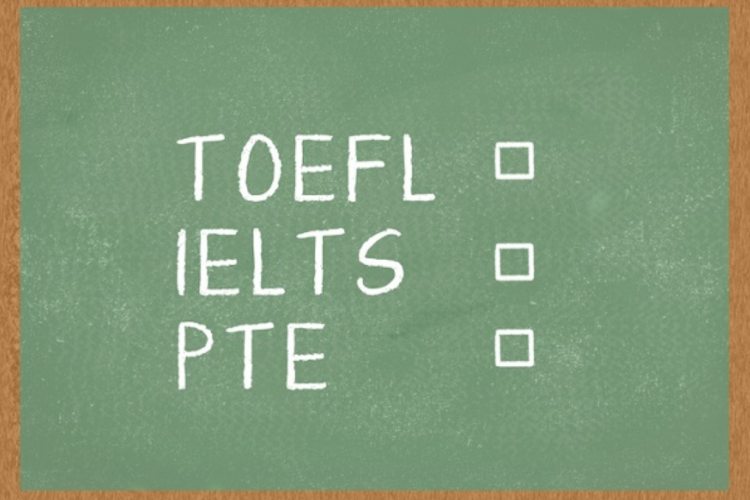Pearson offers a computer-based English test called PTE Academic. PTE Academic is usually taken by people who wish to study or work abroad in an English-speaking country, like Australia, New Zealand, or the United Kingdom. As part of their study application process (just like IELTS), international students take PTE Academic tests to assess their language abilities. Globally, there are over 350 test locations in more than 116 countries.
The educational institutions of the country you want to go to often ask for your PTE score equivalent with IELTS. Hence, it’s important to compare the PTE score with IELTS. Read this article to know more about the exam and how to calculate PTE score with IELTS.
Also Read: What is the Difference between PTE General and PTE Academic? PTE Test Preparation and Strategy
Types of PTE Test
PTE Academic: Using the GSE (Global Scale of English), the PTE Academic tests the four skills of listening, speaking, reading, and writing. It is also accepted by thousands of universities worldwide and approved for all visa categories in the UK, Australia, and New Zealand.
PTE Academic UKVI: For all UK visas, the Secure English Language Test (SELT) approved by the UK Home Office is the PTE Academic UKVI language test. The difference between PTE Academic and PTE Academic UKVI is that the registration process complies with UK requirements. Applicants for UK visas should book this test.
PTE Home
For citizenship, family, and settlement applications in the United Kingdom, two-skill English language tests are accepted. It takes less than 30 minutes to complete the PTE Home test.
How PTE Marking is Done?
A score report is provided to each candidate who finishes the test successfully. You can expect to receive your exam report card within five working days after the exam. PTE scores provide an overall score broken down into two main categories: communication skills and enablement skills. Communication skills comprise listening, reading, speaking, and writing. Grammar, Oral Fluency, Pronunciation, Spelling, Vocabulary, and Written Discourse come under enabling skills.
Calculation
They start by taking an average of the enabling skills. Together with the other four communicative skills, this number represents the fifth contributing factor to the overall PTE score. Therefore, your enabling skills indirectly boost your average. So, if your communication skills score is close to a borderline, enabling skills may make a difference.
The scores from the overall section are generally rounded up. Once the average scores are 88 or higher, they are rounded up to 90, and the average of the enabling skills is automatically omitted.
How to Compare PTE Scores with IELTS?
A reputable organisation conducting an English proficiency test like ETS, the British Council, IDP, Cambridge, and Pearson Group for PTE performs rigorous research before releasing the concordance reports.
Several test-takers were confused about the PTE score calculator with IELTS after Pearson Group released the 2020 PTE score guide. As Pearson stated in a later announcement, the PTE score chart 2020 will be based exclusively on IELTS. It was further explained that the updated PTE score is only for universities, schools, colleges, and educational institutions to meet their updated scores requirements.
To compare the PTE scores with IELTS, we have the following chart published in 2020.
Also Read: PTE Band Score Chart 2021: Everything about Ideal PTE Band Scores and Validity
| IELTS | PTE Academic | PTE General |
| 9 > | N/A | 86 |
| < 8.5 > | 89 | 83 |
| <8 > | 84 | 79 |
| < 7.5 > | 76 | 73 |
| < 7 > | 66 | 65 |
| < 6.5 > | 56 | 58 |
| < 6 > | 46 | 50 |
| < 5.5 > | 36 | 42 |
| < 5 > | 29 | 36 |
| < 4.5 > | 23 | 30 |
| 4 > | 22 > | 29 > |
What is the Passing Score for PTE?
PTE does not have a passing score. However, a score of 50-63 in a range of 10-90 is considered proficient. The grade point average is expected to range from 65-75 for standard and better university options.
Is PTE Easier than IELTS?
Some people believe that the PTE is easier than the IELTS; however, it is a highly subjective opinion. Both tests measure your reading, writing, speaking, and listening abilities and are commonly used to apply for education or immigration to major English-speaking countries.
Notably, the reading section of IELTS is easier, whereas the writing section of PTE is easier, so you should consider where your strengths lie. It is also important to think about whether you are more comfortable speaking to a computer or people for the speaking section.
When it comes to IELTS, either paper or computer-based tests can be taken, while PTEs are completely computer-based. Think about your handwriting and typing skills when you are deciding which test to take.
Also Read: PTE General Valid for Which Countries: List of Top Colleges That Accepts PTE Scores
Guidance for Language Test Preparation
To ensure constant improvement, it’s essential to have a Personal Mentor. With years of experience and expertise in this field, the mentors at IELTS Ninja offer valuable guidance. They clear your doubts, provide ample resources and study materials and help you improve on your weaknesses. Attend the free demo class to truly experience the benefits of this online study platform.
<class=”s1″>











